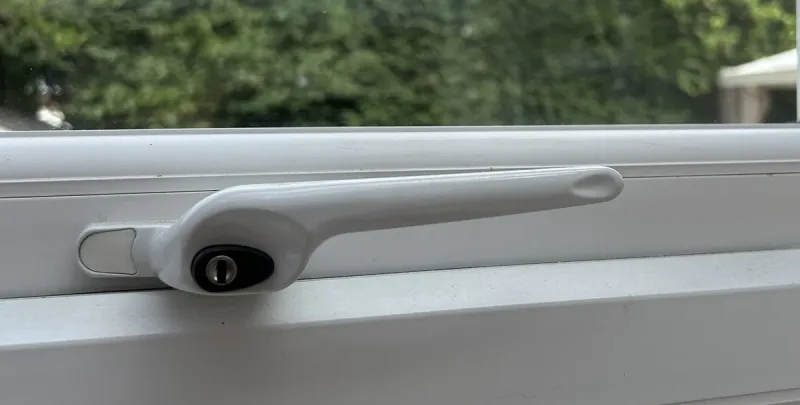Flat and Pitched Roofs
Typically pitched roof houses are made up of traditional slates, concrete tiles or clay tiles. As the building ages tiles can become loose and water seeps into the property causing damp, wood rot and other water damage which can be costly to repair. For pitched roofs the most common cause of problems occur when the nails rust away that were holding the slates in place. There may be absolutely nothing wrong with the slate itself but as the nails rust the slate slips out of place or even falls away and breaks.
Using a slate ripper tool it is possible to cut away one of the good nails that is still solid to remove the slate tile. This will then expose the timber battens to which the slate is nailed to. It is then necessary to fit a lead or zinc strip to the battern. This acts as a hook which can be bent round either a new tile all the existing tile at it’s bottom edge to stop it falling out of place in the future. If the dislodged tile resides at the bottom edge of the roof is likely there is more to hold in place to stop wind and rain entering that area of the roof.
In this situation you will need to replace his the to reseal and make good the watertight aspect of the roof. Roofs that are made up of concrete tiles or clay tiles which are usually held in place by hooks fitted over the roof batterns. This provides a more sturdy and snug fit for the tiles.
Ridge tiles are the curved tiles that sits directly on the very top of pitched slate roofs and are usually held down in place using mortar. With heavy storms, wind and rain these can sometimes become dislodged and will need to be repaired as a matter of urgency. Any loose crumbling mortar will need to be removed with a trowel and fresh mortar used to reseal the ridge tile. Just like bricklaying, the ridge tile will need to be gently tapped back in the place so fits snugly in it’s original position. The joints will need to be edged off and filled with mortar with any outstanding scrapings removed with the trowel end.
Pitched roofs can sometimes be quite inaccessible if they have valleys. Sometimes these valleys are lined with lead flashing to ensure rainwater escapes into the guttering. When the joints in this lead flashing corrode water leaks into and inner roof area. This will typically need to be repaired using a soldering iron to ensure the flashing is watertight again. Prior to soldering, the area will need to be primed and clean as it may contain mulch leaves and other debris swept off the valley roofs into the valley area.
Repairing cracks and blisters in flat roofs can be more problematic. Failure to repair a flat roof can result in rotten timbers as water leaks through. This sort of damage can push up flat insurance premiums for owners of flats with flat roofs. Failure to address the problem in the short term may lead to greater repair bills in the longer term. This is because the average life of a felt roof is only between 10 and 15 years. For flat roofs of this age it is generally more cost-effective to simply recover and then attempt to repair. For minor repairs to younger flat roofs there are some methods or repairing cracks and blisters.
Cracks and blisters can be repaired using bituminous mastic. The first step is to remove any loose debris away from the area to be repaired including leaves, stones and other twigs brought down by weather. The next step is to heat up the area of repair using a hot air gun to soften the damaged roofing felt before scraping it away. The next job is to neatly cut a cross using a stanley knife to peel back the layers of felt to then apply the mastic. The press down the edges of a cut cracks again. Flashing tape can then be rolled over to crack to protect the repair.
To re-cover a felted flat roof first remove any mould must be removed using fungicide killer. Next apply a liquid rubber compound over the surface area by tipping out the contents and spreading it around with a broom or brush. When the rubber coating has dried reapply the stone chippings. In the roof junction areas of the property flashing tape will be required to re-seal the metal flashings edging from the flat roof to the wall. Run a steam roller along the edges to ensure the tape bonds.
To replace the entire felt is a bit more difficult. For pitched roofs it is first necessary to cut the felt sheet using a wider area than the roof itself. Next nail the sheet into position ensuring that there is an overlap on the edges of the bottom edge of the pitched roof. Self-adhesive mastic then be applied to the top edge of felt using a paintbrush before applying a second strip filled overlapping the first ensure that the nail heads are protected from the elements. Just like wrapping up a parcel with paper, the edges of the felt need to be folded and tucked underneath each other at the corners into neat folds so that the timber edges are not exposed. More adhesive can then be applied to the joint at the corners of the roof which has the impact of making the pitched corners waterproof.
To recover an entire felted flat roof requires the least three layers of felt. Firstly the old felt must be removed in order to assess the condition of the existing timbers. Check for wood rot and make any necessary repairs accordingly. Make sure any old rusty nails are removed from the timbers to prevent blisters and cracking in the new layers about to be put down. Note the general layout of the old folds in the existing felt as you remove (it to help you mark out the edgings of your new felt layers). Note that flat roofs are not actually flat as two sides of the roof are slightly higher than the other two corners so rainwater run-off is adequate. Cuts a separate flashing strip to run alongside the property wall adjacent to the roof. If in doubt replacing a flat roof property is best left to a qualified and experienced builder.





























